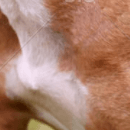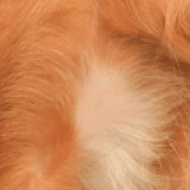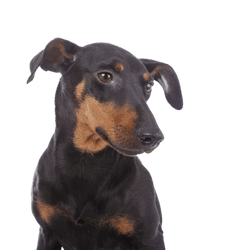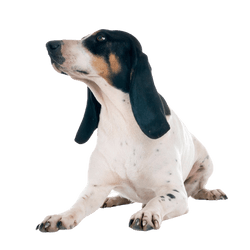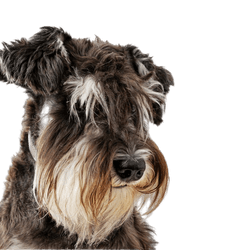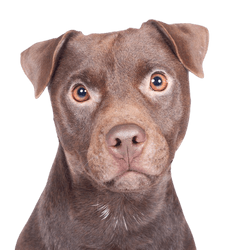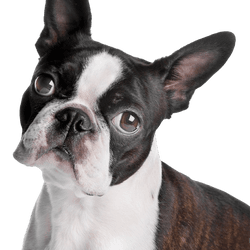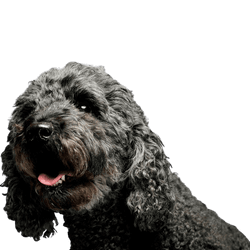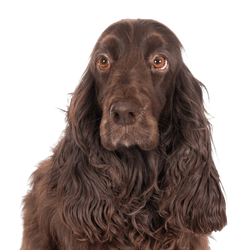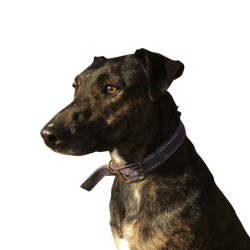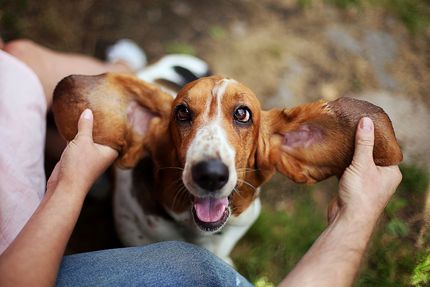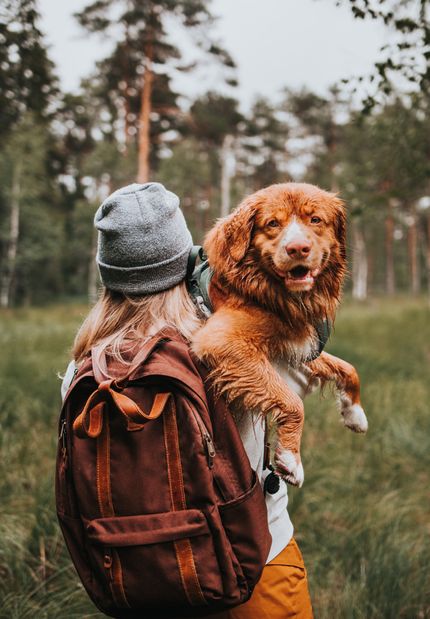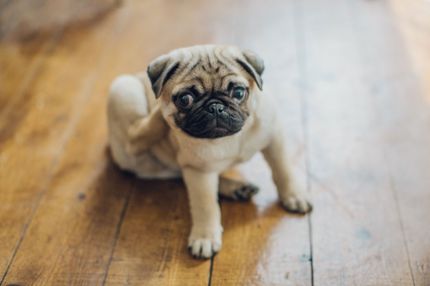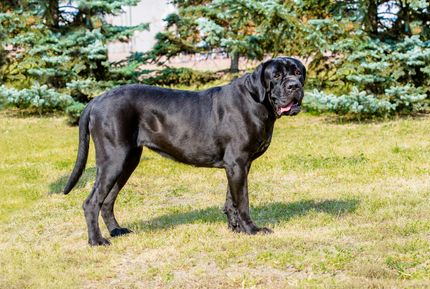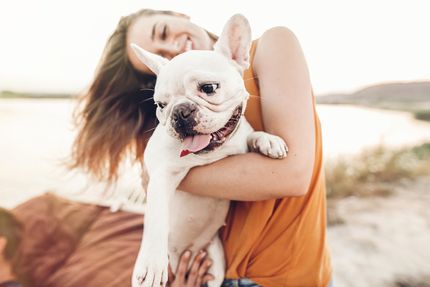Facts & Origin
The breed of the English Bulldog is a popular one and makes for an ideal family dog. Nevertheless, some information about this lovely four-legged friend is necessary if you're considering buying an English Bulldog.
As an owner of an English Bulldog you have no regulations in regards to their keeping to worry about. Its past as a "fighting dog" does not burden your life together with this four-legged friend.
This dog can have a mind of its own. With patience you this hurdle can be overcome though. If you give your English Bulldog a lot of love and trust, it is easy to train. Clear rules make living together easier. The favourite place of this furry friend is the sofa. Nevertheless, it is easy to motivate them to go for walks. This is important because otherwise they will quickly become overweight.
This relaxed and friendly dog is an ideal playmate for children. They will always act careful around them. There are no biting incidents known about this breed. When they see a threat to their family though, they might turn up the heat for a bit. For example, they might shoot towards the garden gate to bark at an "intruder" in a deep tone. The English Bulldog does not become aggressive in any way though and will turn away after a short time.
What is the origin of the English Bulldog?
This ancient dog breed has long been known as "English Bulldog". The ancestors of this British breed were bred and used as fighting dogs by the Celts. They had to fight for their lives already in ancient Rome. At that time animal fighting was carried out for the amusement of the people. The field of application for the English Bulldog was fighting with bulls.
In the 16th and 17th century this "entertainment" breed was also popular in England. From their activity as "bull biters" the name of this dog breed developed. Queen Elizabeth I was a great advocate of this dog breed. In 1835, this "sport" was finally banned in Great Britain.
The number of dogs of this breed decreased rapidly. In 1864 and 1875 breeding clubs were founded, which established a breed standard and shifted the focus of the breeding goal. The purpose of the English Bulldog's life changed. In the beginning, they were popular as companion dogs of the English gentleman. Later, the use as a family dog came along.
This British dog breed has been recognised by the FCI. The Standard No. 149 is documented in Group 2, Section 2.1.
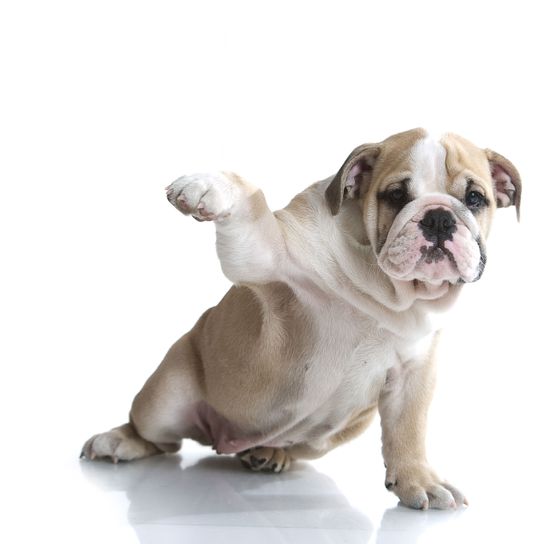
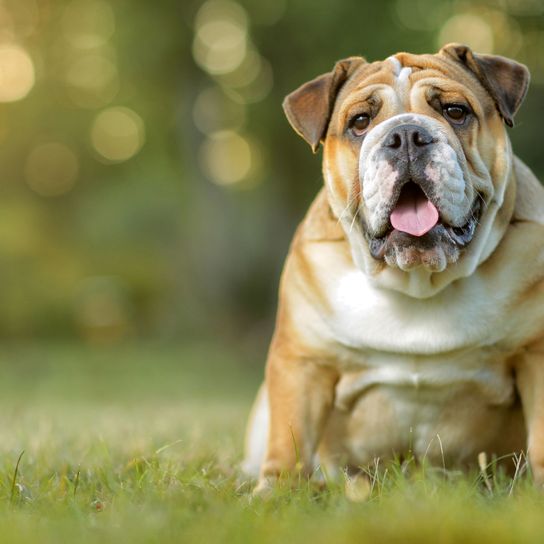
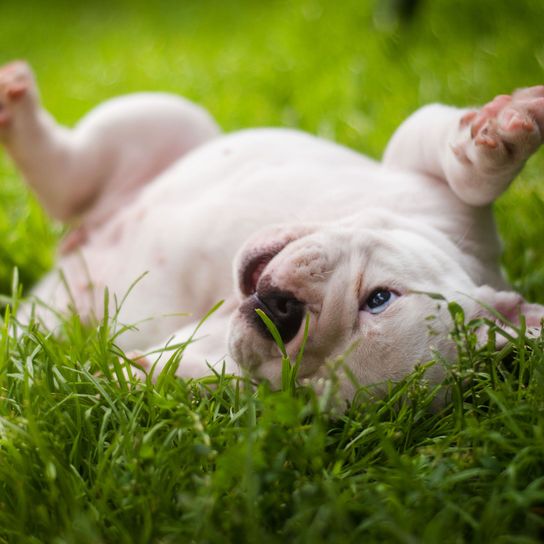
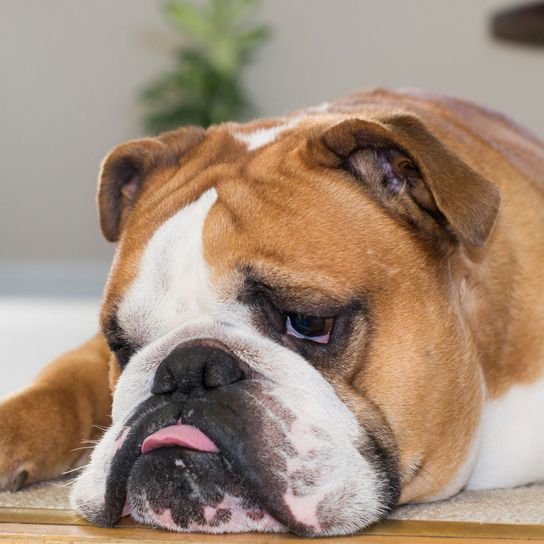
| Alternate Name | Bulldog, Bulldog (English), Olde Bulldog, Olde English Bulldogge, Old Tyme Bulldog |
| Origin | UK |
| Life expectancy | 10 - 12 years |
| Care requirements | low-maintenance |
| Activity level | low |
| FCI group | Molossian type |
| AKC group | non-sporting group |
| KC group | utility group |
English Bulldog mixes
Attitude, character and temperament of the breed
What are typical characteristics of the English Bulldog?
With its characteristic features the English Bulldog is especially suitable as a family dog. From their ancestors they have inherited courage. This is not a disadvantage in daily life with them. Furthermore this dog is:
- quiet
- good-natured
- relaxed
- friendly
- alert
- reliable
- has a mind of its own.
Above all, they express their love for their owner or their family with a lot of love and will always greet you with over-the-top welcoming rituals. There is rarely something that can make this furry friend lose its cool.
Character
Usage
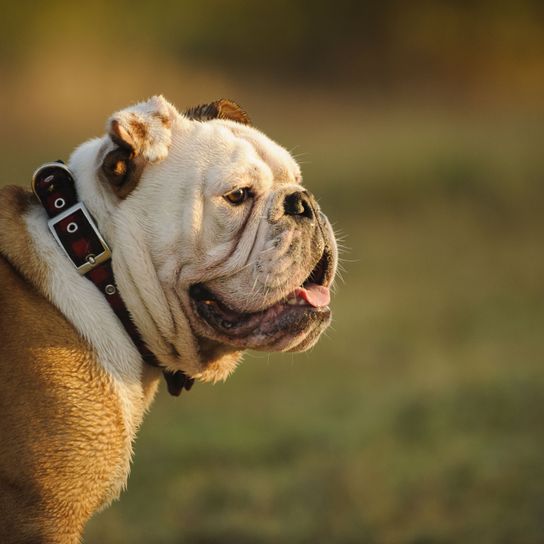
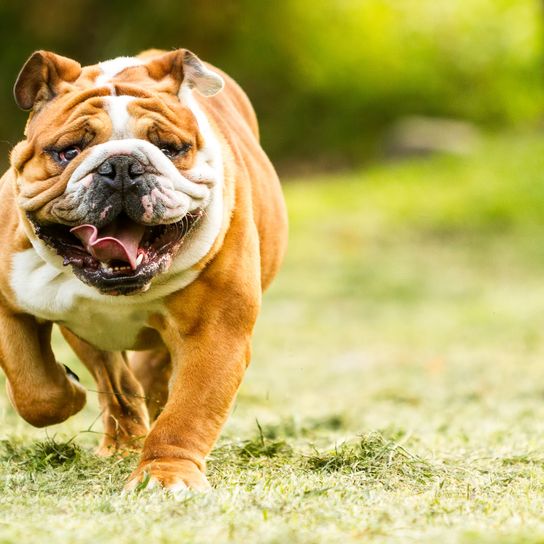
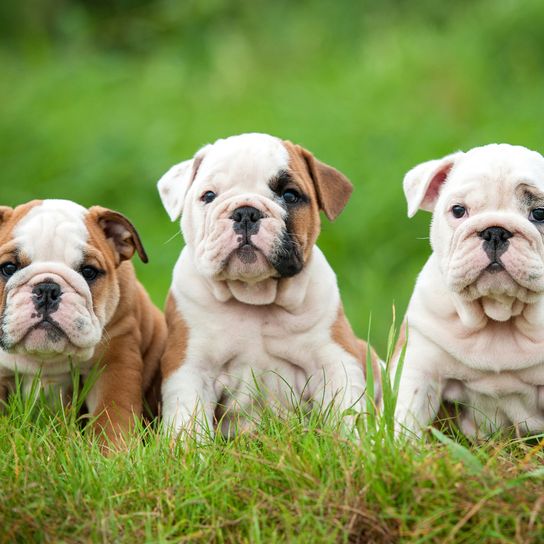
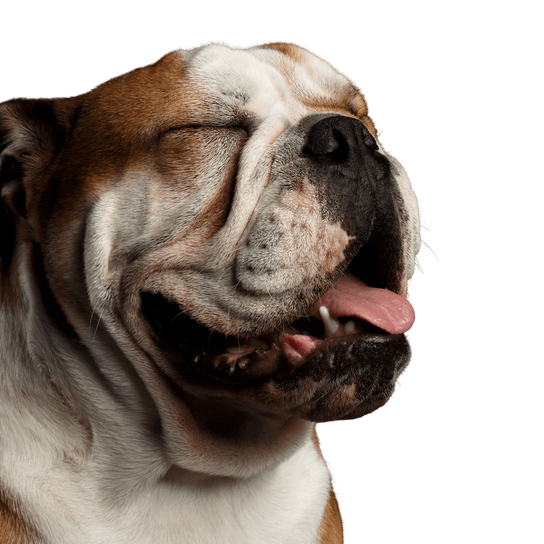
What are typical diseases of an English Bulldog?
The English Bulldog has a big problem with heat. To prevent your animal from getting circulation problems, they must be provided enough water and have other options to cool themselves down. Most importantly, you should not do too much physical exercise with your four-legged friend during the summer months.
Further problems occur because of their short muzzle. The English Bulldog can struggle to breath sometimes. When exercising they can have difficulties breathing.
Below is a list with the most common health problems that can be minimised with careful keeping and care.
- Breathing difficulties
- Heart problems
- Eye Inflammation
- Skin inflammation
What should be considered in regards to the breeding of the English Bulldog?
If you want to buy an English Bulldog, you must contact a responsible breeder. Since 2009 the rules for breeding English Bulldogs have changed. With this change the Kennel Club in London wants to prevent so-called "torture breeding".
In the past, attention was often paid to achieving an extremely short muzzle and a lot of skin folds. Both of which can cause this dog big health problems. Female dogs cannot give birth to their puppies naturally in the English Bulldog breed. Because of the way their body is built a caesarean section is necessary.
These things are gradually changing. Unfortunately, there are still a lot of black sheep among breeders. When buying, make sure that new standards are being followed.

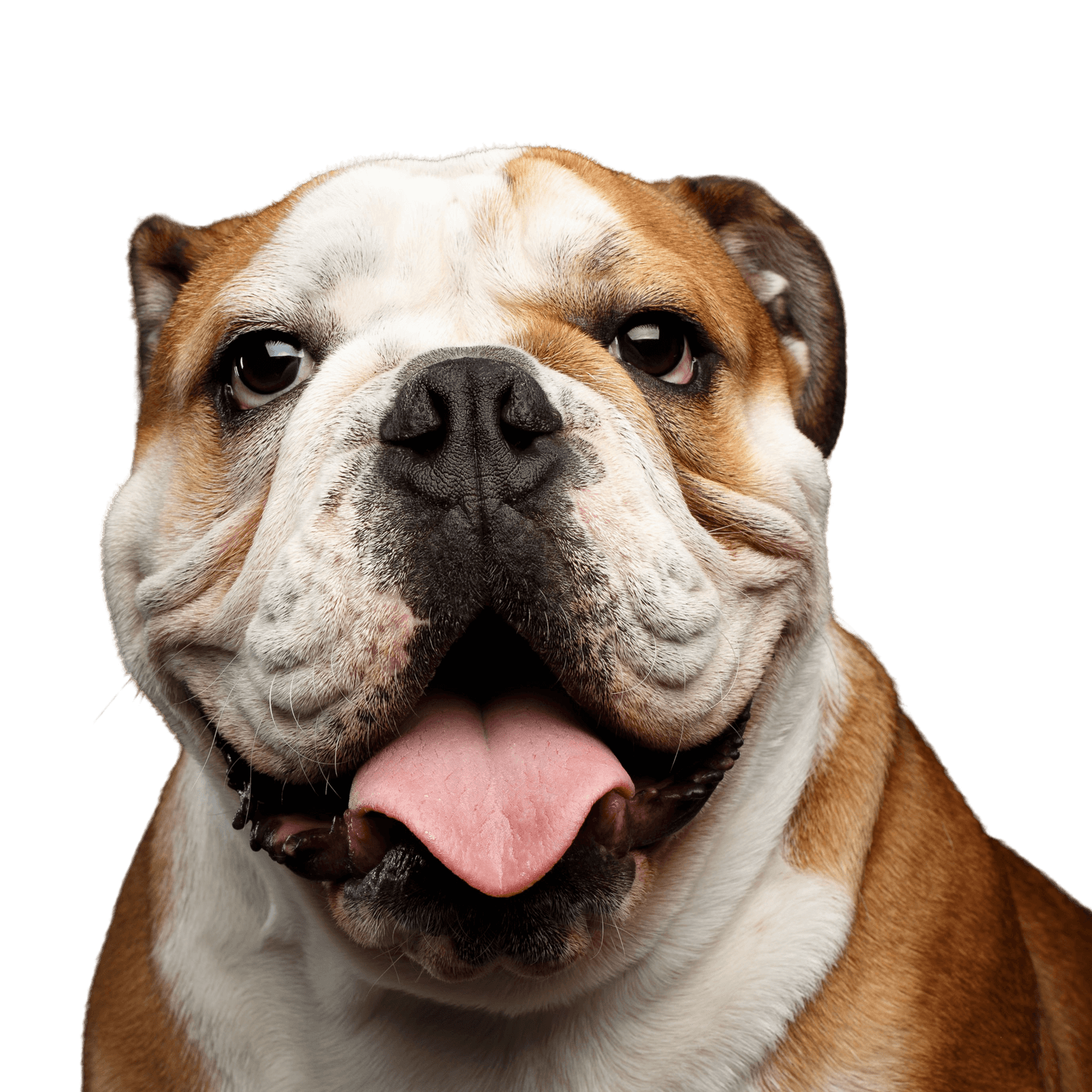
What are the breed characteristics of the English Bulldog?
This short-legged and compact breed is muscular and strong. The large head is featured with a short and broad muzzle. Their broad shoulders and strong neck make them stand out. The dog's body gets narrower towards the back. Also a trade mark are the skin folds of their face and neck area. Their paws and legs are strong.
Appearance and coat of the English Bulldog
Their coat is short and dense. The smooth fur is easy to groom. Occasional brushing is quite sufficient for this dog. The English Bulldog can have different colour variations. This pedigree dog is available in red, brown and fawn colours. Some of the colour shades are brindled or spotted white. The colour black is not represented.
Typical for the English Bulldog are their skin folds. These wrinkles can be more or less pronounced in different types. In this area you have to spend some time for their care. You can avoid skin inflammations by doing daily check-ups.
What is the English Bulldog's average size?
This type of dog is considered a small dog breed. Their height reaches between 31 and 40 cm measured at the withers. This shoulder height applies to both sexes. Of course the bitches are smaller in relation to the males.
They reach a weight of 23 to 25 kg depending on sex and height. For their height this dog looks they are carrying a bit too much weight. This is not the case. Their strong body is very muscular which creates this impression. However, the English Bulldog tends to gain weight easily.
What is the average lifespan of an English Bulldog?
Their life expectancy lies between 10 and 12 years.
| Fur length | short |
| Fur | flat coated |
| Ear shape | Floppy Ear |
| Tail | stubby |
| Anatomy | muscular, massive, square, hefty |
| Size ♀ | 31 - 40 cm |
| Weight ♀ | 23 - 35 kg |
| Size ♂ | 31 - 40 cm |
| Weight ♂ | 18 - 23 kg |
| Suitable For | Beginner, Seniors |
Colors



Known Diseases
Eye diseases
Often occur with allergies and intolerances.
Skin inflammations
Can be hereditary in certain breeds.
Heart disease
Can occur frequently in dogs and can sometimes be treated with medication.
Breathing problems
Dogs with shortened muzzles can often experience respiratory problems.
FAQ
-
No. The English Bulldog does not count as a fighting dog or a listed dog.
-
It is best to keep a bulldog in a large apartment with garden access or in a house. But on an apartment with elevator is no problem. Stair walking bulldogs should not be excessive, because it is bad for the joints.
-
An English Bulldog costs about 2000 Euro. Depending on the coloring, this can also be 3000 euros.
-
English Bulldogs shed during coat changes and at certain times of the year. With regular brushing, however, it is within reason.









